PLEASE NOTE THAT THIS COURSE DOES NOT USE CANVAS.
Sonoma State University Department of History
History 202: The Development of the Modern World, Fall 2024
Tuesday and Thursday, 2:30-3:45 p.m., Stevenson 1102
Instructor:
Mary Halavais: halavais@sonoma.edu .
Stevenson 3708
Office hours: 5:30-7:00 pm T Th
Please make an appointment to talk to the prof during these hours.
Library Research Guides and Study Information
The University Library can help you find information and conduct research. Look here to see what other services the library offers
SSU Learning and Academic Resources Center
(LARC) offers three academic support programs for students: Tutorial, Supplemental Instruction , and the Writing Center. Visit the LARC website for more information.
Learning Objectives/What will I learn in History 380 this semester?
Content knowledge:
1. Familiarity with key ideas and important events from 1400 A.D. to the present.
2. An appreciation for the varied approaches historians use in studying this period.
3. Awareness of the significance of the past to the present.
Academic skills:
1. The ability to read various type of sources critically;
2. The ability to present ideas clearly, and
3. The ability to locate information efficiently and use it effectively in an argument.
Grades/ How will my work be evaluated?
You will be graded on a 120 point system, with points available for participation in discussion groups, as well as for quizzes and exams. Your total points erned will determine your grade for the course. We’ll talk about this at the first class meeting.
Discussion group – 5 points
Reading quiz – 5 points
Midterm examination – 25 points
Final examination – 25 points
PLEASE NOTE that this course does not use Canvas.
Reading required for this course:
Weekly reading assignments are listed week by week on the syllabus below. The professor expects you to arrive in class with any questions you may have about the assigned reading, and prepared to discuss that reading. You are expected to have the text with you, or available on laptop or other device, in order to reference the material during discussions. There will be unannounced reading quizzes.
Writing required for this course
Midterm and final examinations; reading quizzes.
Please note that you are required to cite all sources used in your written work. This includes the use of A.I. Using a source without providing proper citation is plagiarism.
Plagiarism in this course will result in your failing the course as a whole, in addition to whatever penalties the University imposes. Please see the university catalog for more information.
Class participation required for this course:
Please note that attendance alone does not constitute participation. Participation requires you to speak up in class, and to engage with the material and with your fellow students. This is an academic requirement.
Required Texts
Peter Frankopan, THE SILK ROADS: A NEW HISTORRY OF THE WORLD. New York: Vintage, 2015. ISBN 9781101912379.
Links to other required texts are contained in the week-by-week schedule below.
Class Protocol
Please remember to treat your fellow students (and your professor!) with respect at all times. This means listening carefully and quietly to what each person has to say.
Your professor will try to speak clearly and slowly (which will be a challenge! Please tell me if I need to speak more slowly.) She asks that you do the same. If at any point you are uncomfortable with what is happening in class, please talk with the professor or someone else in the history department right away. We learn best in a comfortable environment!
Students with Special Needs
If you are a student with special learning needs, your first step is to register with the campus office of Services for Students with Disabilities, 707-664-2677. DSS will provide you with written confirmation of your verified disability, and will notify the instructor of recommended accommodations. Your instructor will discuss these recommended accommodations with you.
Other information
Fires, floods, earthquakes, and pandemics, while not likely, are always possible in California, and they may disrupt classes. We can make adjustments so that your progress in the class will not be affected adversely.
SCHEDULE OF CLASSES/READING ASSIGNMENTS
The study of history often leads down unexpected and exciting paths. The schedule below is the expected list of topics and readings for each week. The prof may add any additional topics, links, or readings that we explore together in class each week. Any added material will first be mentioned in the class setting.

Cantino Planisphere, 1502
WEEK 1: AUGUST 20 AND 22
REQUIRED READING:
1. SILK ROADS, 197-214, due August 27
2. Chen and Kung, “Of maize and men: the effect of a New World crop on population and economic growth in China,” Journal of Economic Growth, 2016-03, Vol. 21(1), 71-99, due August 29
3. Clendinnen, “Explorers,” Ambivalent Conquests (Cambridge University, 2003), 3-20, due August 29.

WEEK 2: AUGUST 27 AND 29
REQUIRED READING:
1. SILK ROADS, 214-236, due September 3
2,”Gunpowder Empires, 1450-1650,” Technology in World Civilization (MIT Press, 2021) To read, please download the PDF. Due September 5.

Vermeer, Girl with a pearl earring, Maritshuis
WEEK3: SEPTEMBER 3 AND 5
REQUIRED READING:
1. SILK ROADS, 236-256, due September 10
2. “From regional to intercontinental trade: the successive European trade empires from the sixteenth to the eighteenth centuries in Asia,” IDEAS working paper series from RePEc, St. Louis, 2010. To read, please download the PDF. Due September 12.
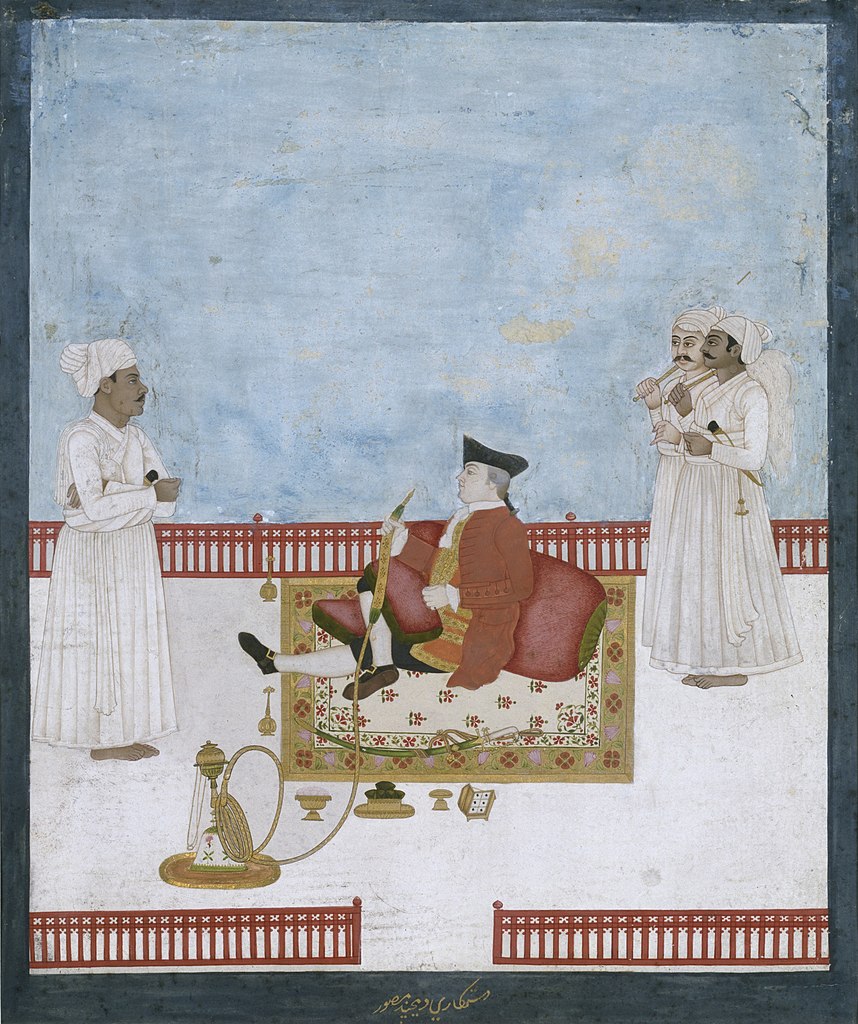
Wm Fullerton, mayor of Calcutta
East India Company portrait, 1757.
WEEK 4:SEPTEMBER 10 AND 12
REQUIRED READING:
1. SILK ROADS, 256-271, due September 17
2. BBC Video, “The Industrial Revolution.” 56 minutes. Due September 19

Adolph Northern, Napoleon’s Retreat from Moscow
WEEK 5: SEPTEMBER 17 AND 19
REQUIRED READING:
1. SILK ROADS, 271-284, due September 24
2. Brubank and Cooper, “Russian Rules.” Empires in World History (Princeton, 2010), pages 271 to 283. Due September 26.
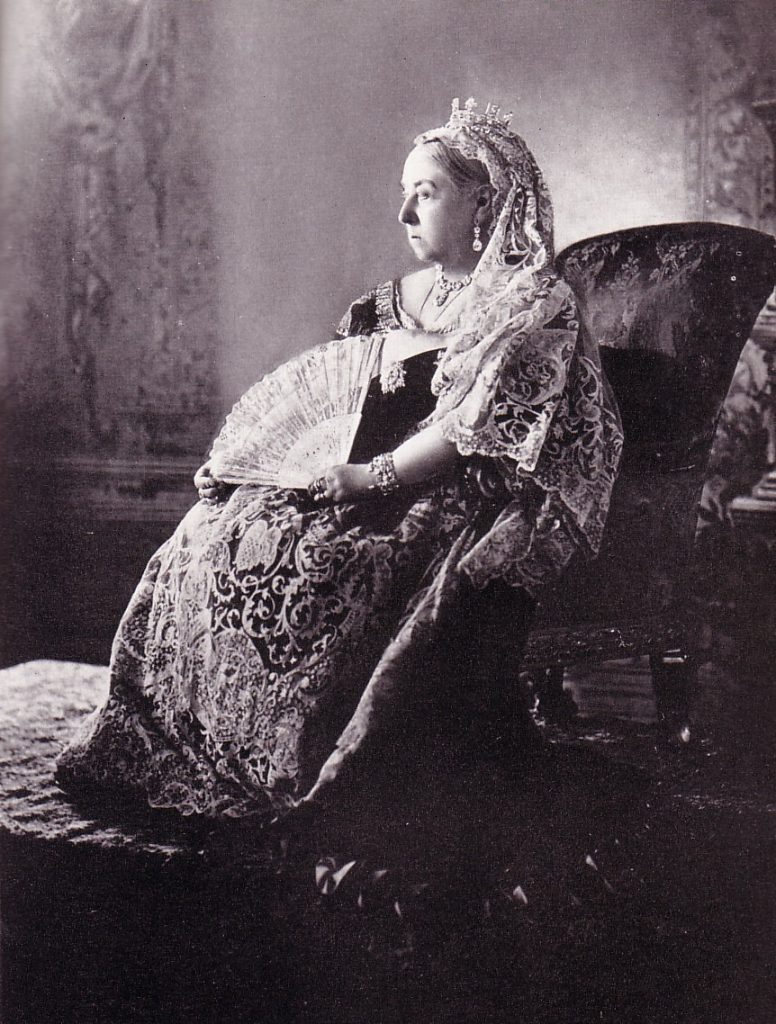
Queen Victoria. Photograph by Downey, 1897.
National Portrait Gallery, London.
WEEK 6: SEPTEMBER 24 AND 26
REQUIRED READING:
1. SILK ROADS, 284-298, due October 1
2. Cohn, “Law and the Colonial State in India,” Colonialism and its forms of knowledge: The British in India (Princeton University, 1996) , 57-76.
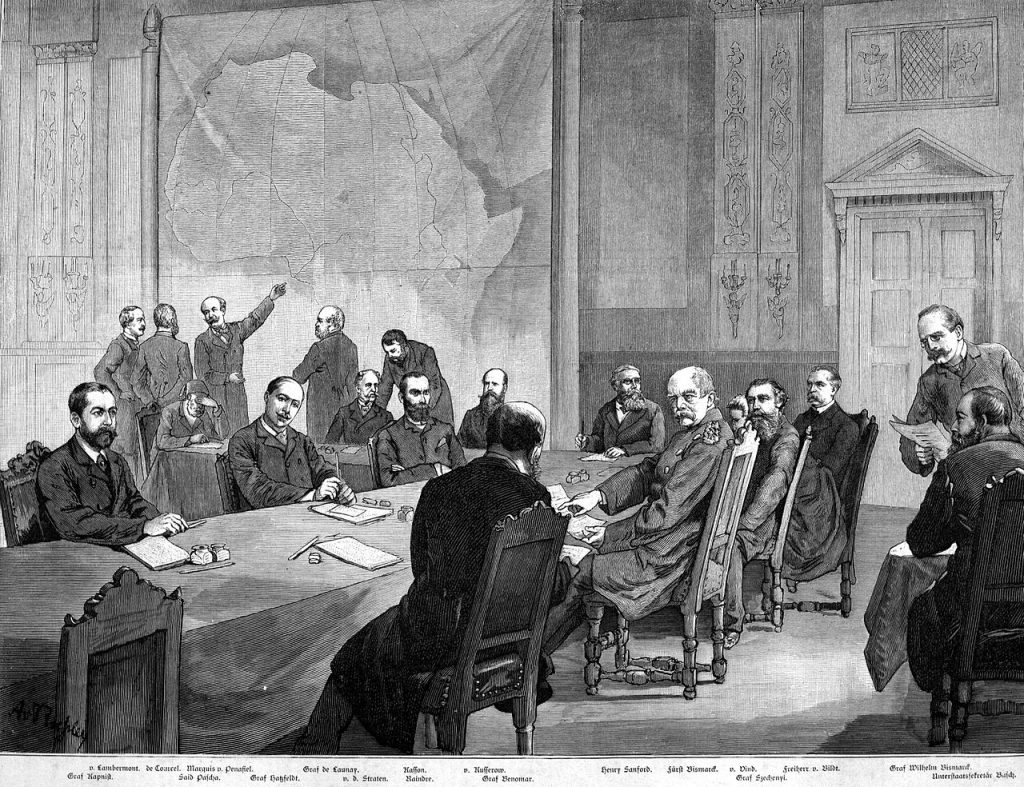
Bismark’s Berlin Conference, 1884, from the “Illustrierte Zeitung”
WEEK 7: OCTOBER 1 AND 3
REQUIRED READING:
1. SILK ROADS, 298-311, due October 8
2. Hewitson, “Nationalism and Images of the Enemy,” Germany and the Causes of the First World War (Bloomsbury. 2004), 39-60.
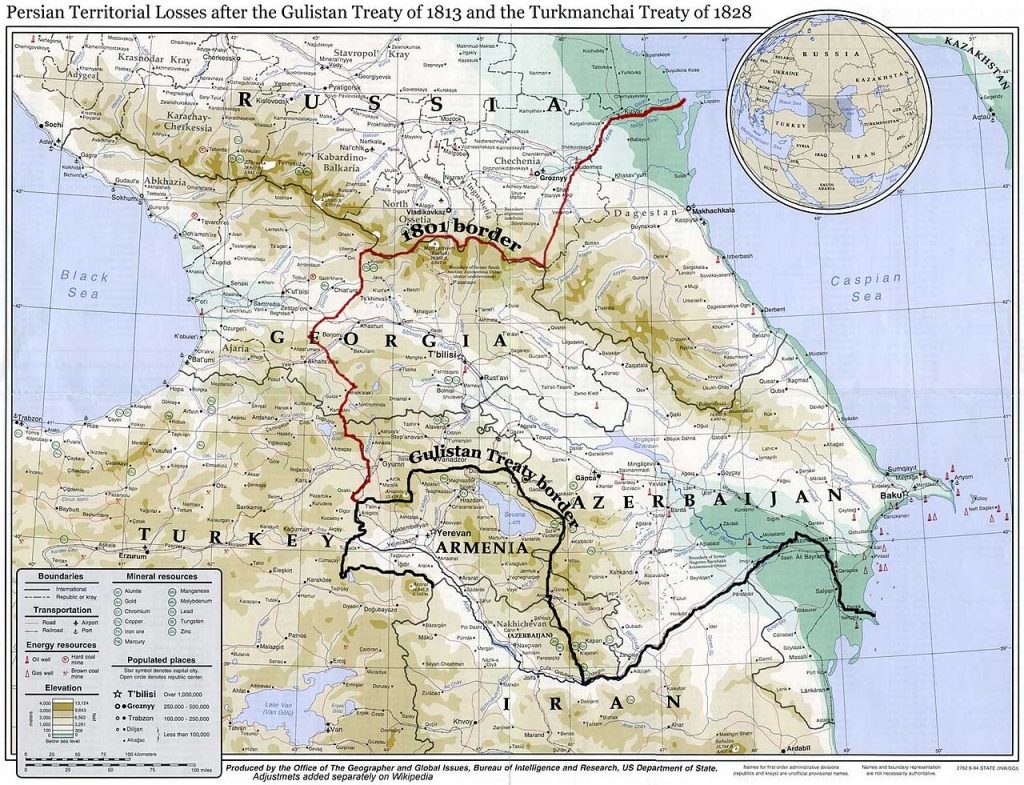
Northern borders of 19th century Iran. Perry Casteñeda Library, University of Texas
WEEK 8: OCTOBER 8 AND 10
REQUIRED READING:
1. SILK ROADS, 311-330, due October 15
2. Atabaki, “From ‘ Amaleh (Labor) to Kar gar (Worker): Recruitment, Work Discipline and Making of the Working Class in the Persian/Iranian Oil Industry,” international Labor and Working Class HIstorym No. 84 (Fall 2013) 159-175.
WEEK 9: OCTOBER 15 AND 17
MIDTERM EXAMINATION
Your midterm prompts will be sent to your sonoma.edu email account on Sunday, October 13. Your two completed essays should be emailed to halavais@sonoma.edu by 11:59 pm Sunday, October 20. You may use any of the required readings, the internet, and any other material you find useful in writing your two essays, but YOU MUST CITE YOUR SOURCES. Note that a URL alone is not a sufficient citation. Further directions and a grading rubric will arrive with the prompts in your email. There will be NO class meetings during exam week. If you have any questions, please email halavais@sonoma.ed
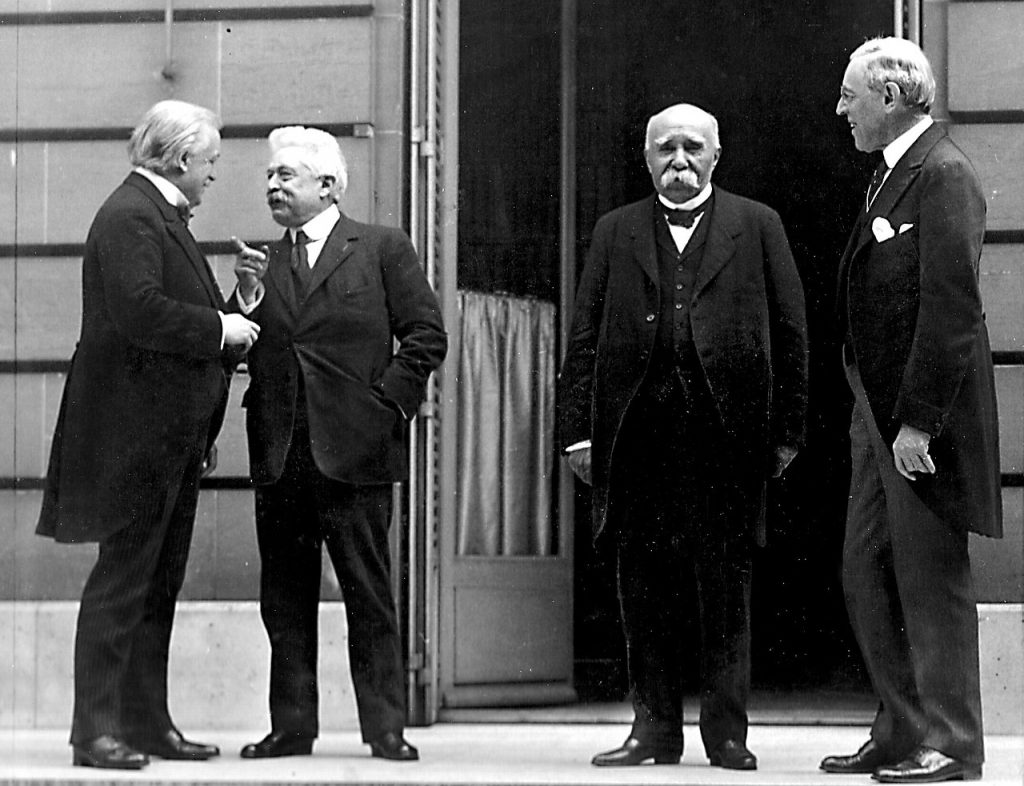
Paris Peace Conferenece: LLoyd George, Orlando, Clemenceau and Wilson
US Army Signal Corps Photo
WEEK 10: OCTOBER 22 AND 24
REQUIRED READING:
1. SILK ROADS, 330-345, due October 29
2. Hobson, “The Wilsonian Revolution: World War I,” The Rise of Democrcy (Edinburgh, 2015) 140-170.

Manzanar Relocation Center, Manzanar, California, 1942
Dorothea Lange
WEEK 11: OCTOBER 29 AND 31
REQUIRED READING:
1. SILK ROADS, 345-364, due November 5
2. Hinnershitz, “Introduction,” Japanese-American Incarceration (U. Pennsylvania, 2021) 1-22.
WEEK 12: NOVEMBER 5 AND 7
T Israel and Palestine
Th China and Japan in the 19th and early 20th century
PLEASE NOTE THE CHANGE IN THE SYLLABUS
WEEK 13: NOVEMBER 12 AND 14
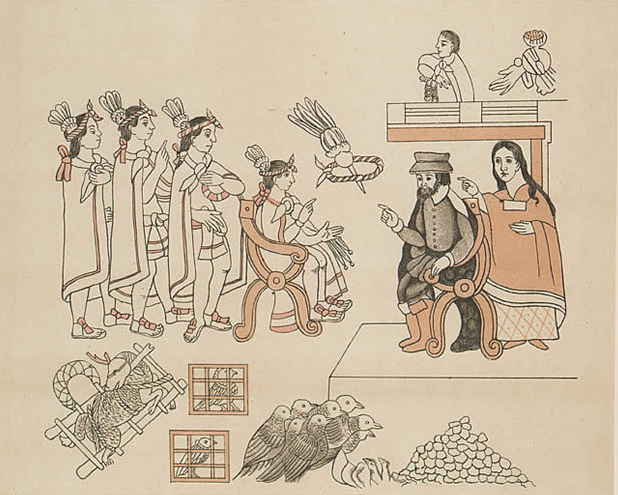
Cortez and Mochtezuma; La Malinche acts as interpreter
T Before Columbus – Mexica (Aztec) and Inca Empires
Th Conquest and Colonization
REQUIRED READING – due November 19
1. Inga Clendinnen, “The CIty,” Aztecs: an Interpretation (Cambridge: Cambridge University Press, 1995) 19-62
OPTIONAL READING
2. Inga Clendinnen, “The CIty,” Aztecs: an Interpretation (Cambridge: Cambridge University Press, 1995) 63-117
3. Bernal Diaz del Castillo, “Arrival in the Splendid City of Tenochtitlan,” The History of the Conquest of New Spain (Albuquerque: University of New Mexico Press, 2009)
____________________
WEEK 14 NOVEMBER 19 AND 21

Simón de Bolívar, by José Gil de Castro, 1825
T Spanish reforms in the 1700s
Th Spain, Mexico and the Manila Galleon
REQUIRED READING due November 26
1. Clayton et al,, “Background to Independence,” A New History of Modern Latin America (Berkeley: U California Press, 2017), 5-17.
2. Clayton et al, “The Coming of Independence in South America,” A New History of Modern Latin America (Berkeley: U California Press, 2017) 18-39.
____________________
WEEK 15; NOVEMBER 26 AND 28

Acapulco in 1628
REQUIRED READING due December 3
1. R. Rayes. “Flaunting it: How the Galleon Trade Made Manila, circa 1571-1800,” Early American Studies, Vol.15, n 4, Fall 2017, 683-713.
____________________
T Independence in Mexico and the rest of Spanish America
Th THANKSGIVING HOLIDAY NOV 28
WEEK 16: DECEMBER 3 AND 5
T Latin America’s long 19th century
Th Instructions for the Final Examination – due December 9 at 11:59 pm
